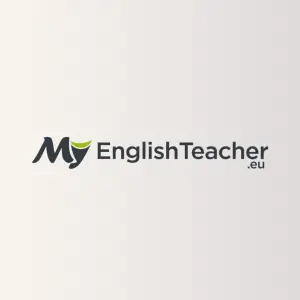The impact that we, as humans have on the environment is a hot topic as of late. It’s something that many people are interested in, and it’s also a great way to increase your knowledge of English.
In this post we are going to focus on the three basic principles of what everyone can do to positively impact the environment, reduce, reuse, and recycle.
We will learn how these actions make an impact, as well as vocabulary words, and example sentences on how to use them.
Skype English Lesson with a native AMERICAN or BRITISH teacher ››
Reduce
Reducing waste means not creating it to begin with, which makes it the most effective way to protect the environment.
This is the single biggest impact a person can have. New products require gaining materials, some of which are extracted from the Earth, assembling them, and transporting them.
This results in a lot of energy being used, and when people are done with those materials they get disposed of in any number of ways. This uses a lot of energy and usually ends up creating waste.
Here are some ways that you can reduce what you use.
- Buy products that have less packaging. Using less packaging means using less raw materials to make a product. An easy way to do this is to buy in bulk. When you buy products with less packaging you also often save money.
- Borrow, rent, or share items that you don’t use that often or that you only plan on using once. These could include sporting equipment, party decorations, and even some clothing.
- Use items that last longer. If a product last longer, you will have to buy it less frequently, thus saving the energy used in making and transporting it, and saving the resources it takes to make it. Light bulbs that last longer, batteries that last longer. All of these are easy to do and can make a huge impact.
Vocabulary
Packaging
Refers to the material that is used to protect and wrap goods.
- The packaging on this is so hard to get into.
Exchange
Refers to the act of giving one thing and receiving another. Usually what is exchanged is of equal value.
- I’m going to bring in some clothes that I no longer want to the thrift store, and exchange them for something new.
Waste management
Includes the collection, transportation, and disposal of waste products, such as garbage and sewage.
- My neighborhood has a new waste management company.
Source Reduction
Includes activities that are done to reduce the size, mass, or toxicity of materials during their lifetime.
- At the meeting we learned many ways that we can contribute to source reduction.
Conservation
Can include preserving, protecting, and restoring things in order to extend something’s life.
- It’s important for everyone to practice conservation.
Reuse
Reuse is closely related to reducing what you use. Many of the ways that you can reduce how much you take from the Earth is by reusing what you and others have already acquired.
By reusing what has already been taken you are slowing the process of new resources being used, and you are also minimizing waste.
Here are some things that you can do to reuse products.
- Use less disposable items. Instead of using plastic cups and cutlery, and paper plates, use flatware and dinnerware that can be used again.
- Buy used items. There is a plethora of used materials that you can easily use; from reclaimed wood, to other building materials, to clothes, to furniture, to kitchenware. This is often also a great way to save money.
- Maintain and repair products. By keeping products, especially heavy machinery maintained it will last longer, thus the materials will need to be replaced less. Repairing items such as clothing or furniture will help increase their useful life.
- Donate things you don’t need or want so that someone else can use them.
Vocabulary
Waste hierarchy
Refers to the priority of the efficient use of resources. The order is as follows; prevention, re-use, recycling, and recovery.
- Are you familiar with the waste hierarchy?
Resource recovery
Refers to the selective extraction of specific disposed material for a clear and specific next use of the material. This helps maximize the use and useful life of material .
- During the presentation, we learned how resource recovery can help create new products.
Closing the Loop
Is when waste that has already been consumed is collected,then recycled, and made into another product.
- Old pieces of aluminum being made into cans, is a great example of closing the loop.
Donate
Means to give money or goods to a cause, usually a charity.
- I always donate my old clothes once a year.
Skype English Lesson with a native AMERICAN or BRITISH teacher ››
Recycle
Recycling is when material that would otherwise be thrown away is collected with the intention of being turned into something else.
Instead of being waste it becomes re-made into a new product. Thus no further natural resources are needed to create this new item.
Recycling is easy. There are six basic categories of what can be recycled.
- Paper- this includes newspaper, notebook paper, colored paper, and practically any other kind of paper you can think of.
- Glass- If something is made of glass you can put it in a recycling bin, but often times you can reuse things that are made of class at home. You can do things like use jars as containers. You don’t have to wait for someone else to do it, you can recycle it yourself.
- Metal- Metal from food and drink products can usually be recycled. You can even recycle aluminum foil.
- Organic- This includes yard and kitchen waste, both of which can make great fertilizer to an informed gardener.
- Plastic- Most plastic products come with a number between 1 and 7 stamped on it. Most recycling centers accept type 1 and 2, which is most of what you use in your kitchen, like beverage bottles and containers.
- Textiles- This includes clothes and shoes. Most charities have drop off centers where they accepts these goods.
Vocabulary
Recycled content products
Is a combination of pre- consumed and post- consumed material that is put together to make a new product.


























